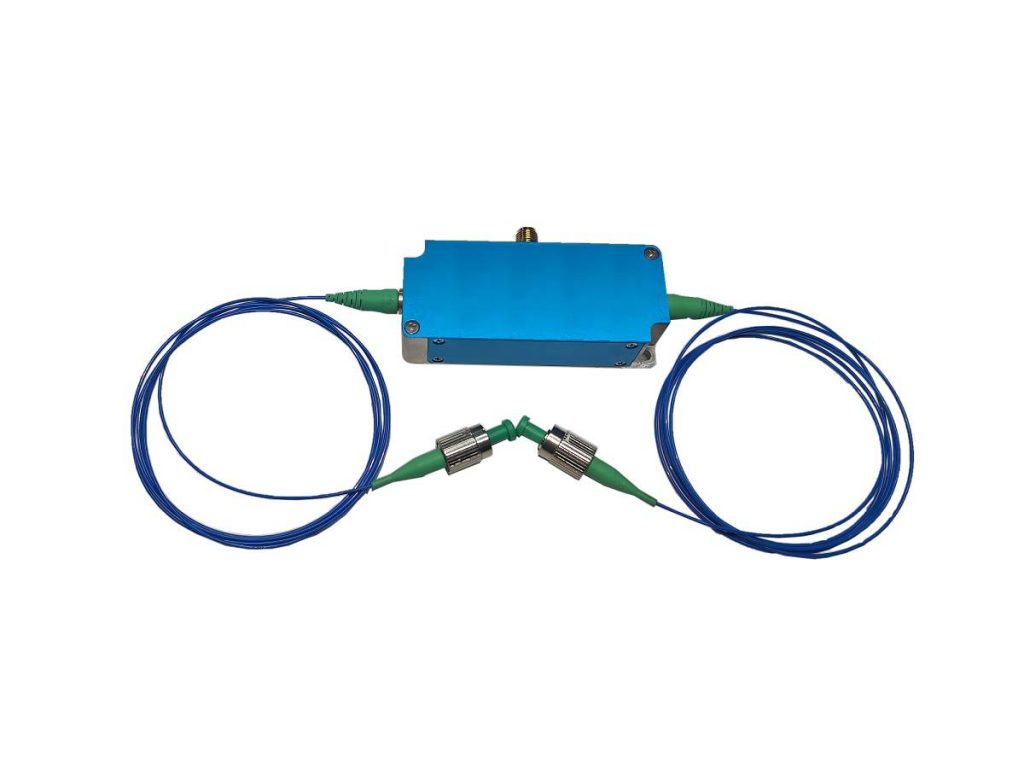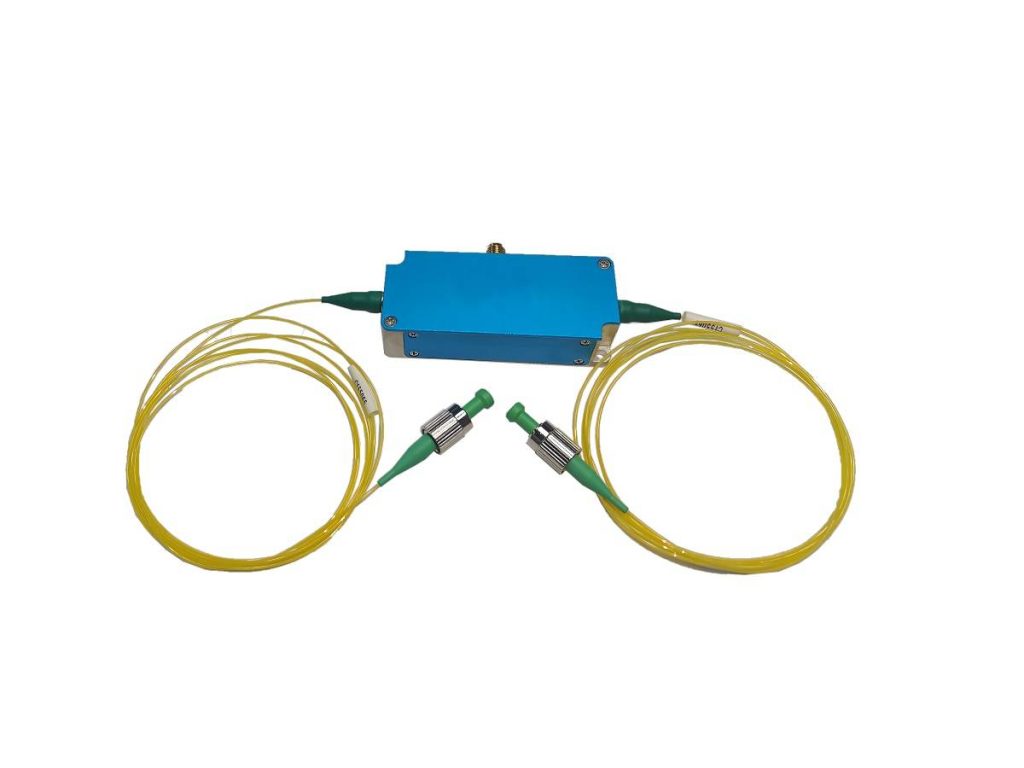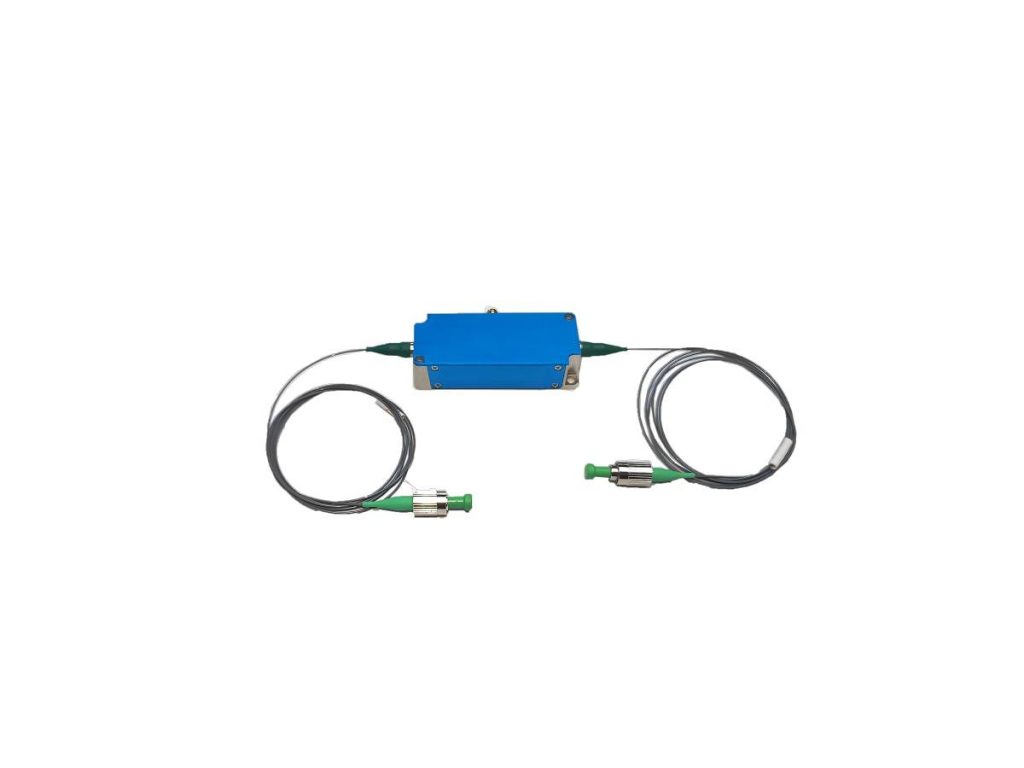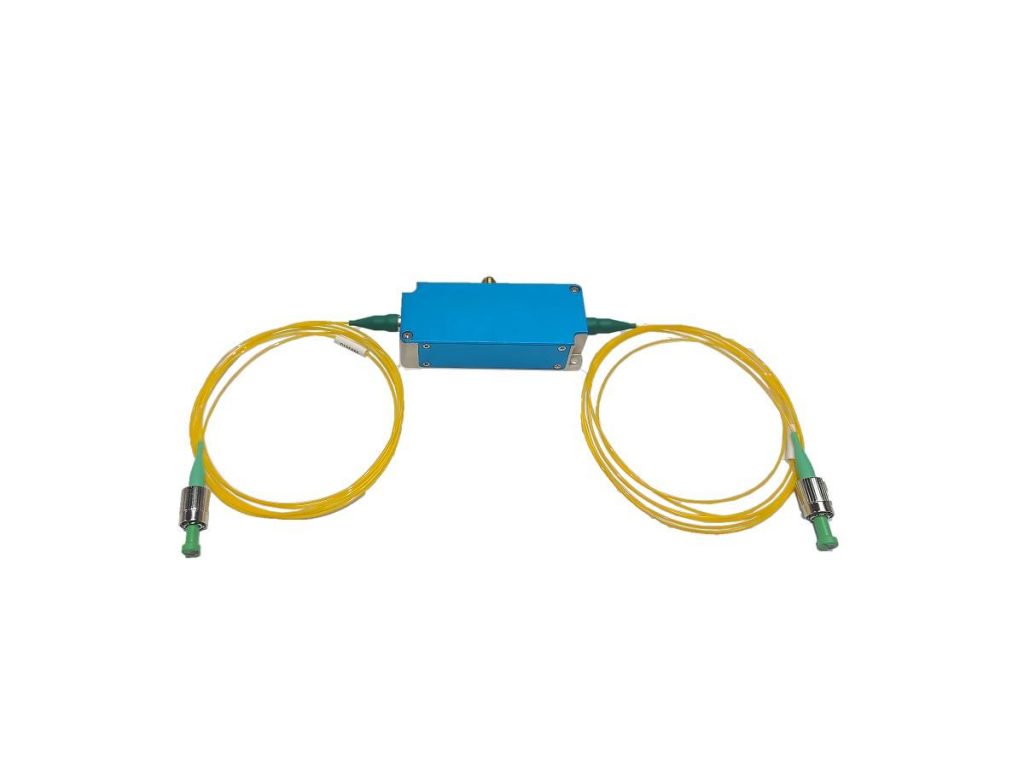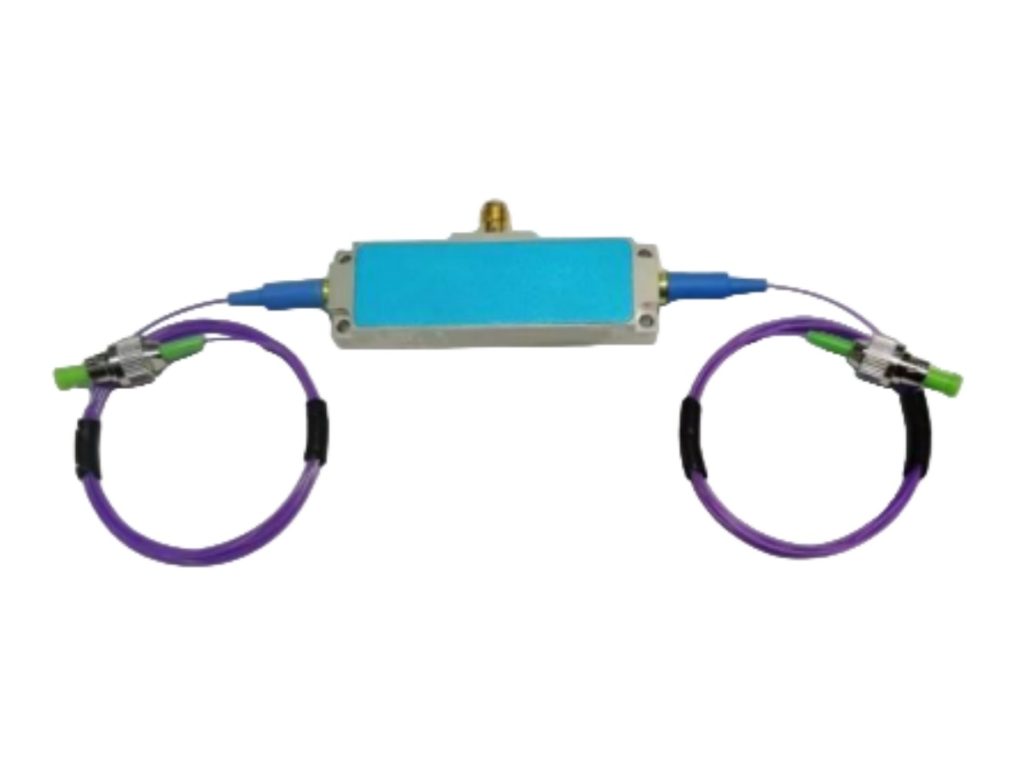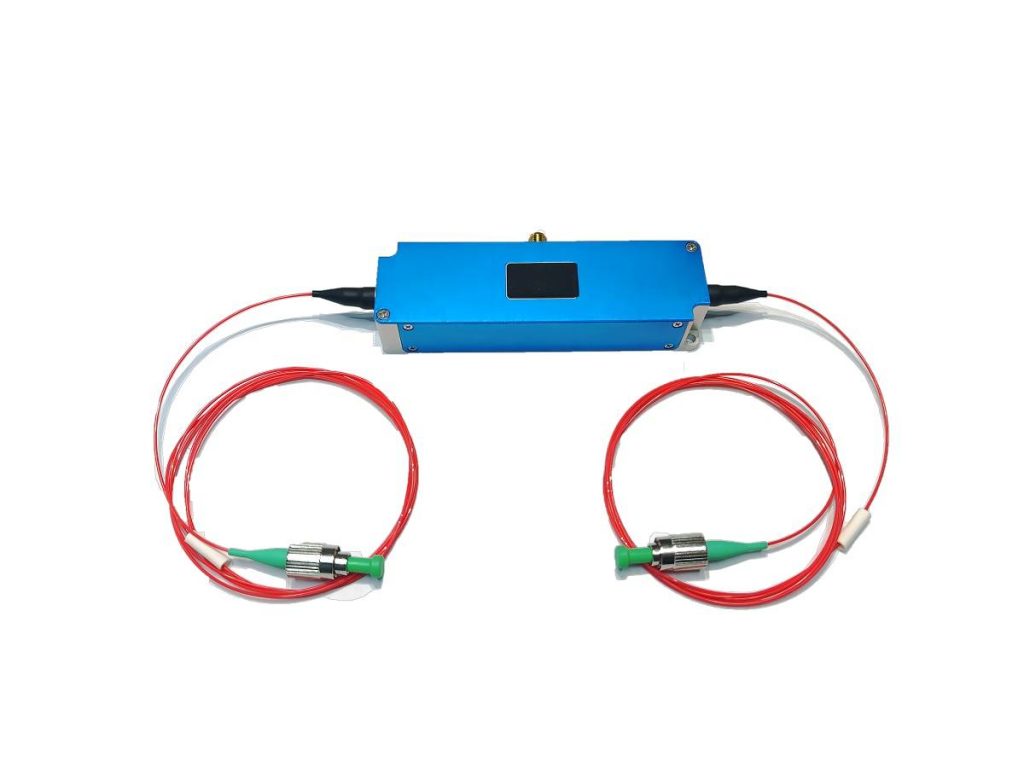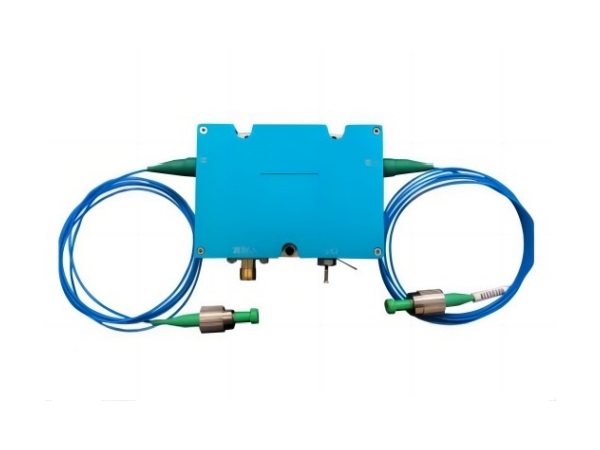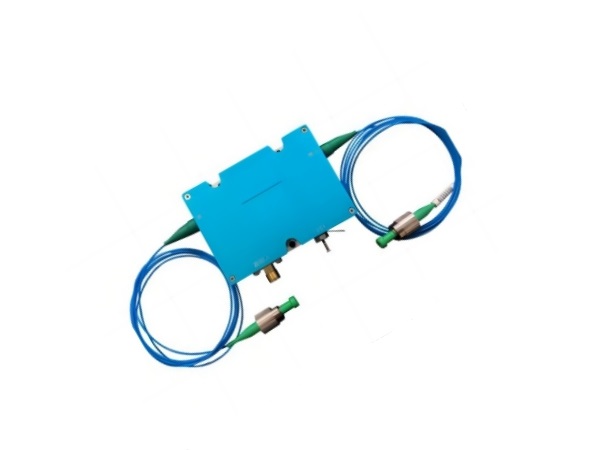Fiber-Coupled Acousto-Optic Modulator (FCAOM): A Precise Tool for Light Control in Fiber Optics
The realm of fiber optics deals with the transmission of light through thin, transparent fibers. In many applications, manipulating the properties of this light becomes crucial. Fiber-coupled acousto-optic modulators (FCAOMs) emerge as highly versatile instruments for this very purpose. This article delves into the intricacies of FCAOMs, exploring their working principles, advantages over conventional counterparts, and diverse applications within the fiber optic domain.
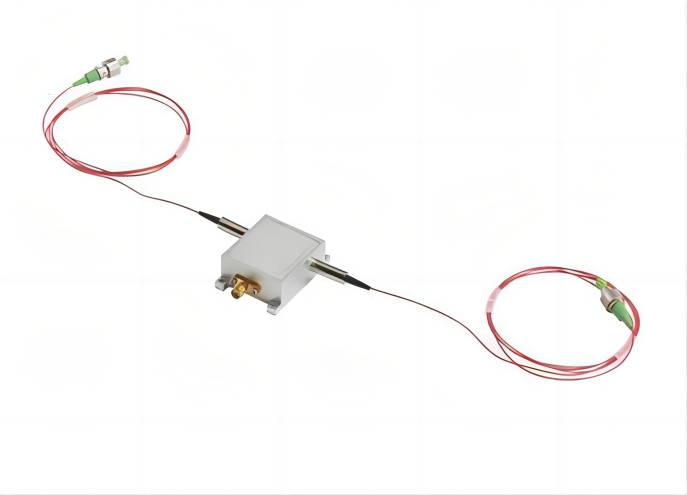
What is FCAOM?
- An FCAOM is a device specifically designed to control the characteristics of light traveling inside an optical fiber. It accomplishes this by leveraging a fascinating phenomenon known as the acousto-optic effect. In simpler terms, the device utilizes sound waves to modulate the behavior of light. This functionality is achieved through the ingenious combination of two distinct technologies: acousto-optic modulators (AOMs) and fiber optic components.
- While conventional AOMs operate on free-space light beams, FCAOMs introduce a key innovation. They integrate fiber optic components to efficiently couple light into and out of the acousto-optic crystal, the core element responsible for light modulation. This integration offers significant advantages, as we will explore later.
How FCAOMs Work?
An FCAOM comprises several key elements working in tandem to achieve light modulation. These components include:
- Acousto-optic Crystal: This crystal forms the core of the FCAOM. It’s crafted from a special material that exhibits a property known as the acousto-optic effect. When sound waves travel through this crystal, they induce periodic variations in its refractive index, the measure of how light bends as it travels through the material. These variations create a diffraction grating within the crystal, influencing the light beam passing through it.
- RF Transducer: This component acts as the bridge between the electrical domain and the sound waves within the crystal. It converts an applied radio frequency (RF) electrical signal into sound waves. The frequency and power of the RF signal directly influence the characteristics of the generated sound waves within the crystal. By carefully controlling the RF signal, users can manipulate the way the sound waves interact with the light beam.
- Fiber Collimators: These collimators serve the purpose of focusing the light beam into the acousto-optic crystal and collimating it back out after interacting with the crystal. Light from the input fiber is typically divergent, meaning it spreads out as it travels. The collimators transform this divergent light into a collimated beam, a parallel beam with minimal divergence, for efficient interaction with the crystal. This ensures optimal light-crystal interaction and minimizes unwanted effects.
- Input/Output Fibers: These optical fibers act as the entry and exit points for the light signal within the FCAOM. Light from a source fiber is coupled into the FCAOM through the input fiber. After interacting with the acousto-optic crystal, the modulated light exits the device through the output fiber, ready for further transmission or processing in the fiber optic system.
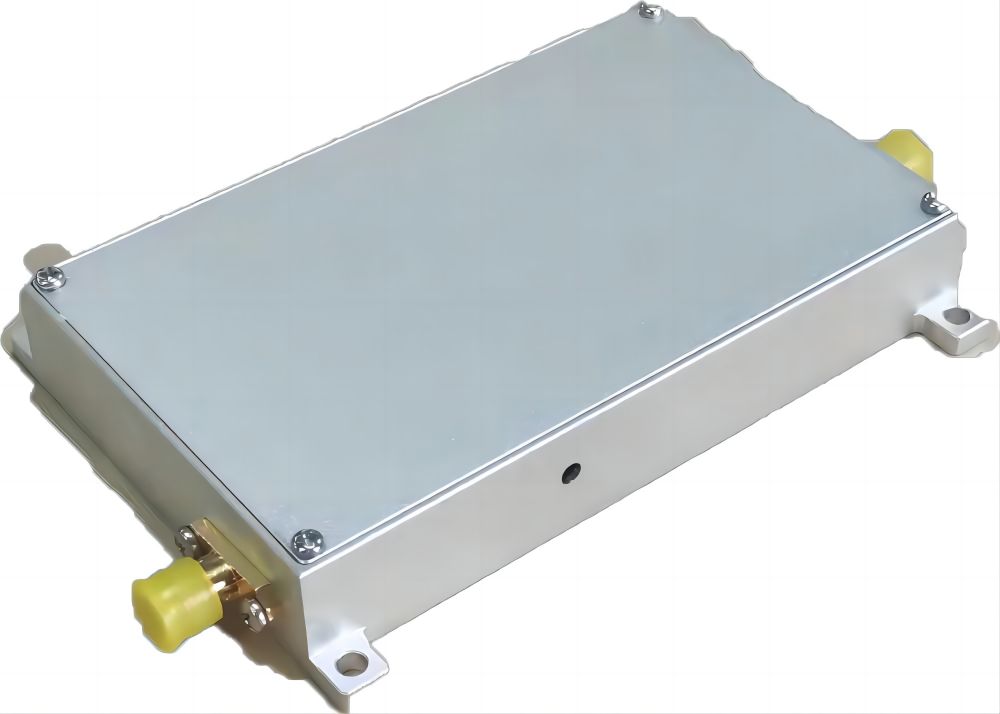
Advantages of Fiber Coupled Acousto Optic Modulators
Compared to conventional AOMs, FCAOMs offer distinct advantages that make them particularly well-suited for fiber optic systems. Here, we explore three key benefits:
- Reduced Insertion Loss: In any optical system, insertion loss refers to the weakening of the light signal as it travels through a component. Conventional AOMs, due to the free-space nature of light manipulation, can introduce significant insertion loss. FCAOMs, on the other hand, excel in this area. By directly coupling light into and out of the device using fibers, they minimize signal loss, leading to a more efficient overall system.
- Improved Efficiency: The efficient coupling of light between the fibers and the crystal in FCAOMs translates to improved overall device efficiency. This translates to a stronger output light signal compared to conventional AOMs, which can experience significant light loss due to free-space propagation.
- Easier Integration into Fiber Optic Systems: The inherent fiber-coupled design of FCAOMs makes them incredibly easy to integrate into existing fiber optic systems. This is because they eliminate the need for complex free-space optics, simplifying system design and reducing potential alignment issues.
Applications of FCAOMs
The precise light control capabilities of FCAOMs open doors to a multitude of applications within the fiber optic domain. Here, we delve into four prominent areas where FCAOMs play a vital role:
- Fiber Laser Q-Switching and Pulse Picking: Fiber lasers are a type of laser that utilizes optical fibers to amplify light. Q-switching is a technique used to control the laser’s output pulse characteristics. FCAOMs can be strategically employed for Q-switching in fiber lasers. By carefully controlling the RF signal applied to the transducer, the FCAOM can manipulate the Q-factor (a measure of cavity losses) of the laser cavity. This allows for the generation of short, high-energy laser pulses with precisely controlled timing, making FCAOMs ideal for applications like material processing and micromachining.
- Mode-locked Fiber Lasers: Another crucial application lies in the realm of mode-locked fiber lasers. These lasers produce ultrashort laser pulses with high pulse repetition rates. FCAOMs play a vital role in achieving this mode-locked operation. By introducing precisely timed and controlled pulses of light through the FCAOM, they can initiate and maintain the specific mode-locking conditions within the laser cavity. This enables the generation of ultrashort pulses for applications such as high-speed optical communication and advanced spectroscopy techniques.
- Optical Signal Modulation: In the realm of fiber optic communication, FCAOMs serve as efficient modulators for optical signals. By varying the intensity or phase of the RF signal applied to the transducer, the FCAOM can modulate the intensity or phase of the light beam propagating through the fiber. This allows for encoding information onto the light signal for data transmission, making FCAOMs valuable components in high-bandwidth communication systems.
- Laser Beam Steering: FCAOMs also hold promise in the area of laser beam steering. By strategically controlling the diffraction pattern generated within the acousto-optic crystal, FCAOMs can be used to deflect the laser beam in a controlled manner. This capability finds applications in various areas, such as laser material processing systems where precise control over the laser beam path is crucial, and in free-space optical communication systems where beam steering is required for efficient signal transmission.
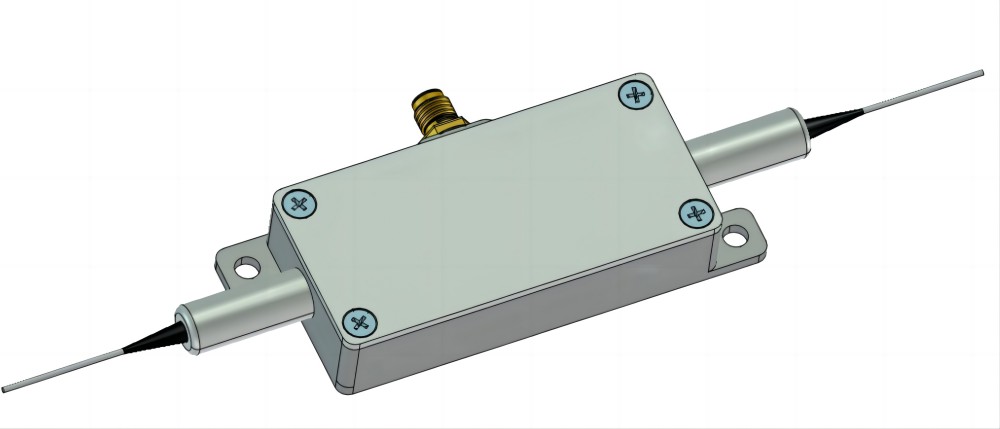
Conclusion
FCAOMs represent a powerful and versatile tool for manipulating light within fiber optic systems. Their ability to leverage sound waves for precise control over light properties opens doors to a wide range of applications. From shaping laser pulses in fiber lasers to modulating signals in communication systems, FCAOMs are poised to play a significant role in the future of fiber optics. As technology continues to evolve, we can expect even more innovative applications to emerge, further solidifying the position of FCAOMs as a cornerstone technology in the ever-expanding world of light control.
SMART SCI&TECH is a leading optics and photonics supplier in China, that provides many different series of AOMs, AOFS, AOM Drivers, and so on. If you are interested in learning more about fiber coupled acousto optic modulator, please feel free to contact us.

